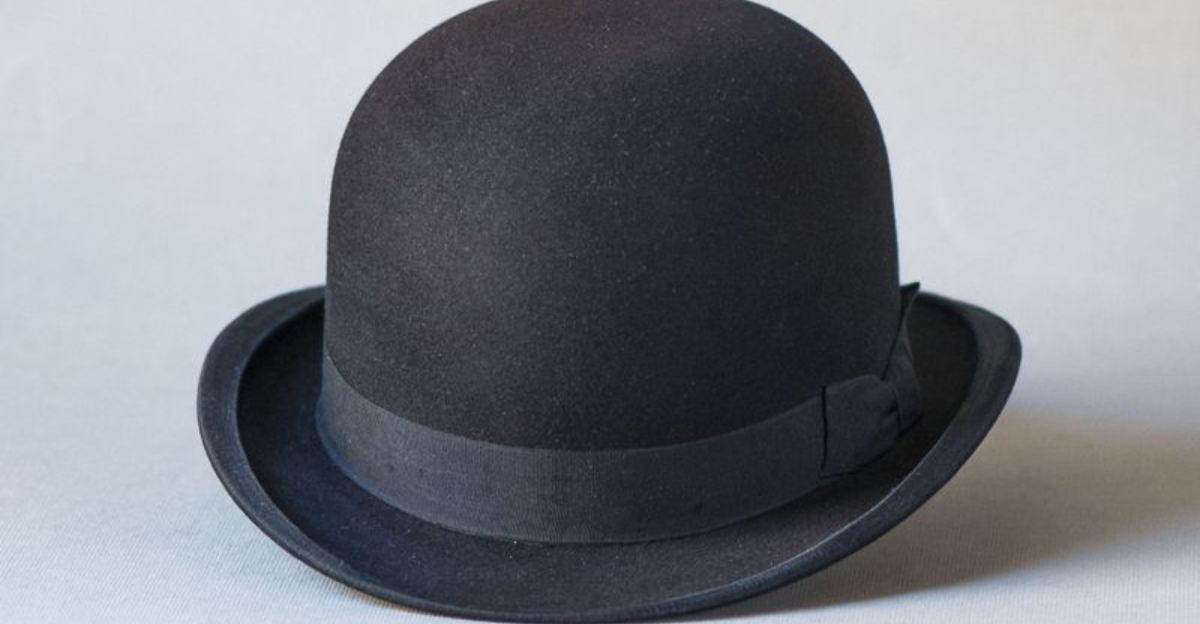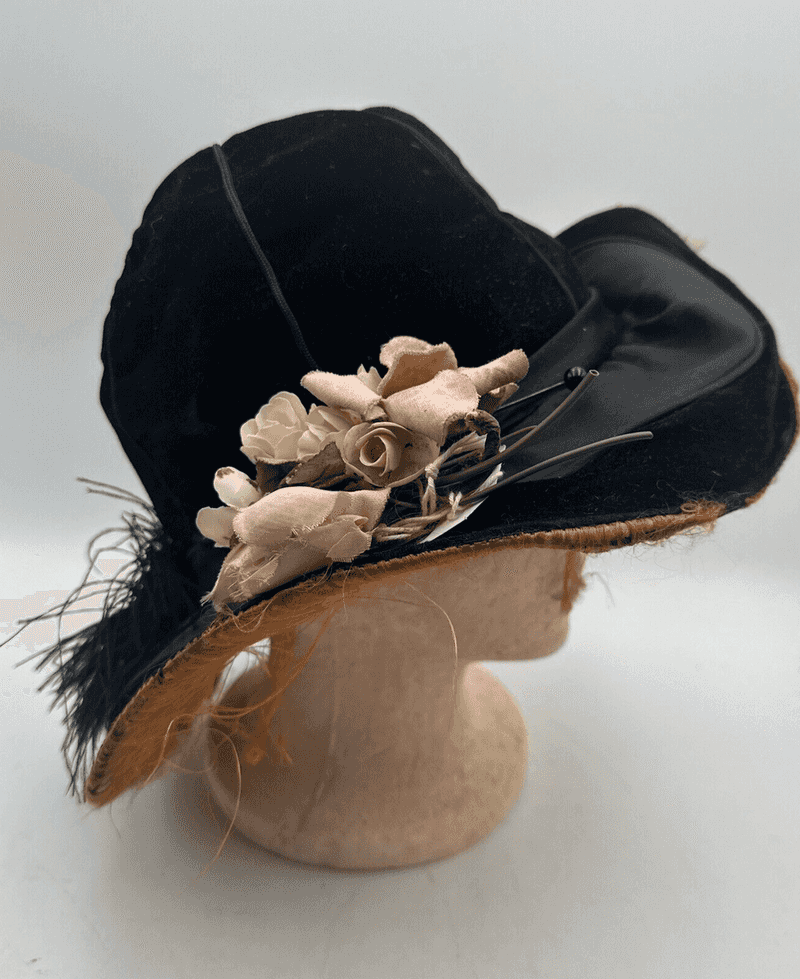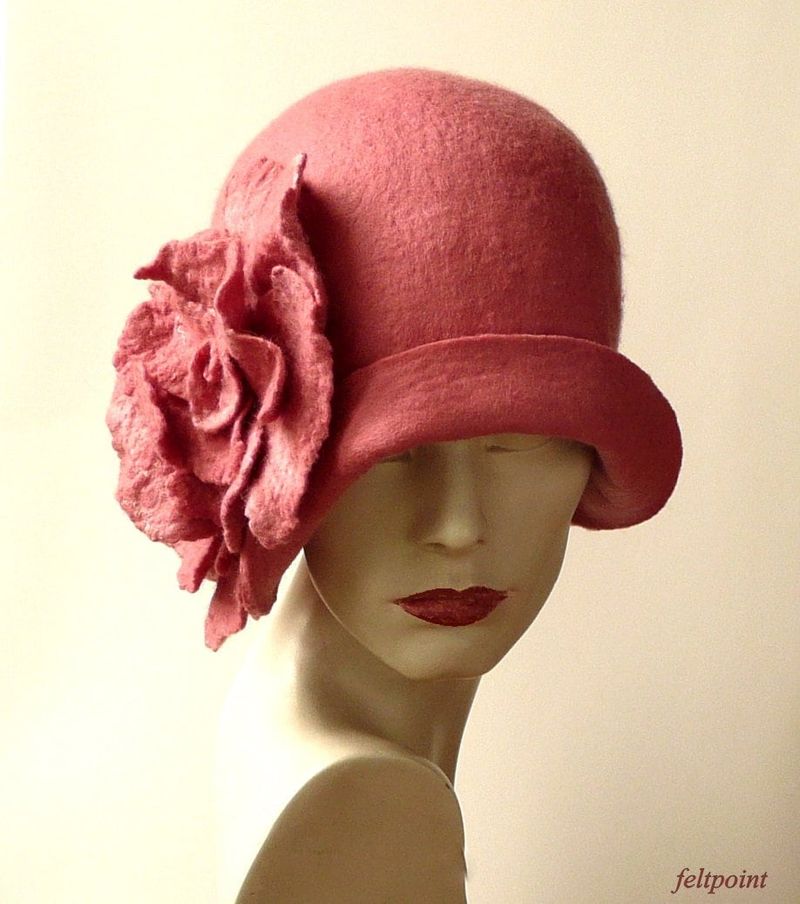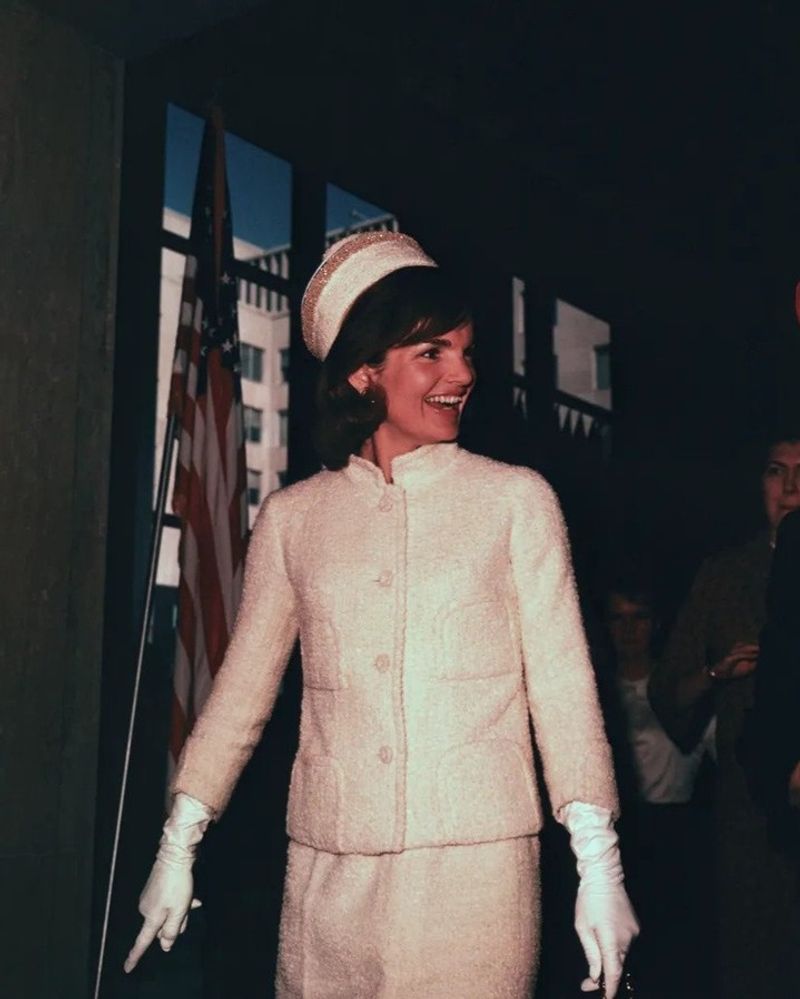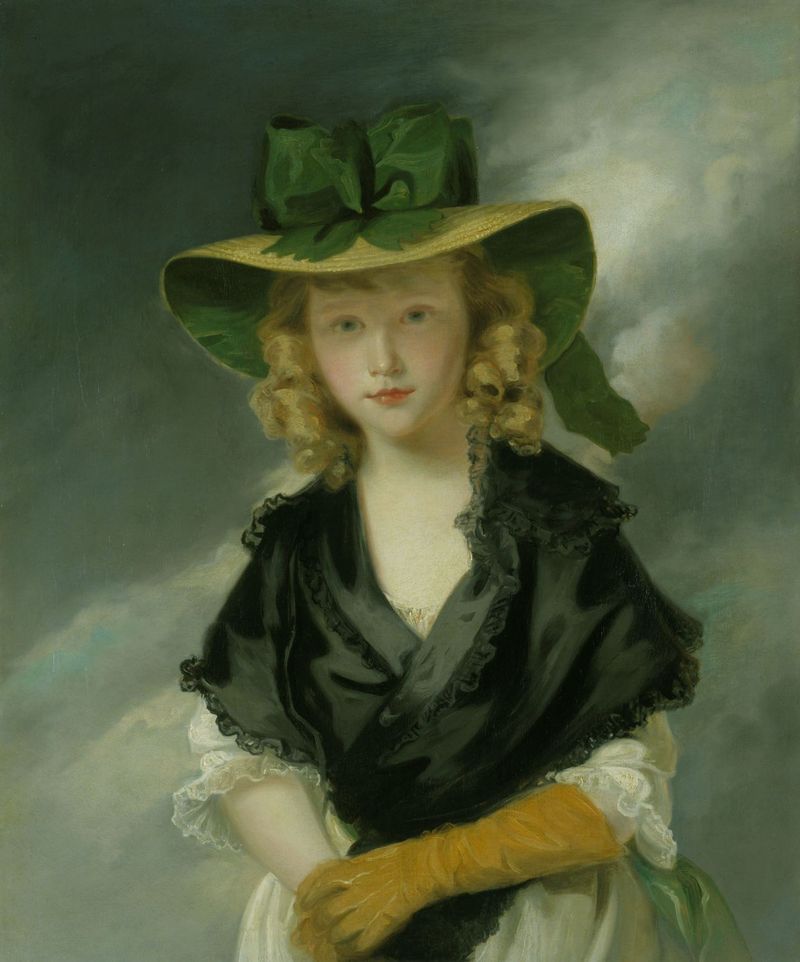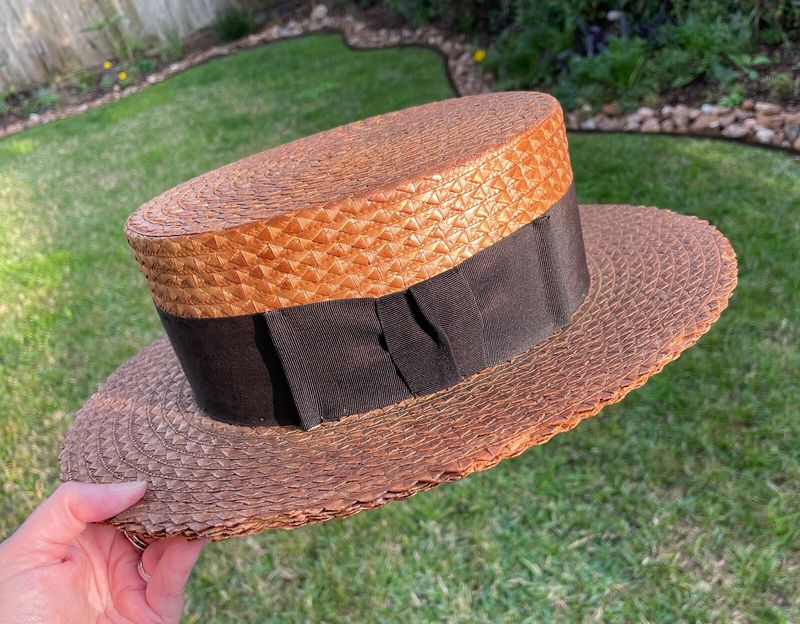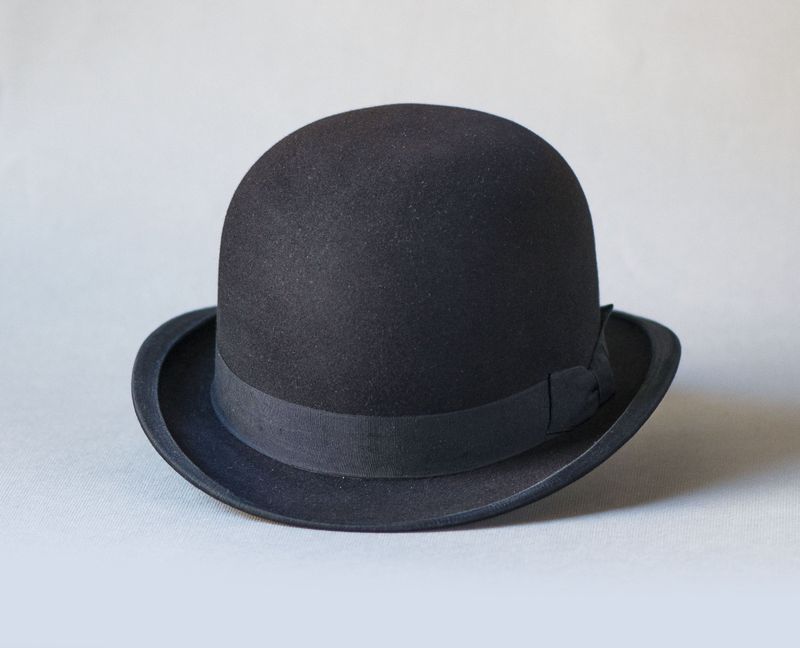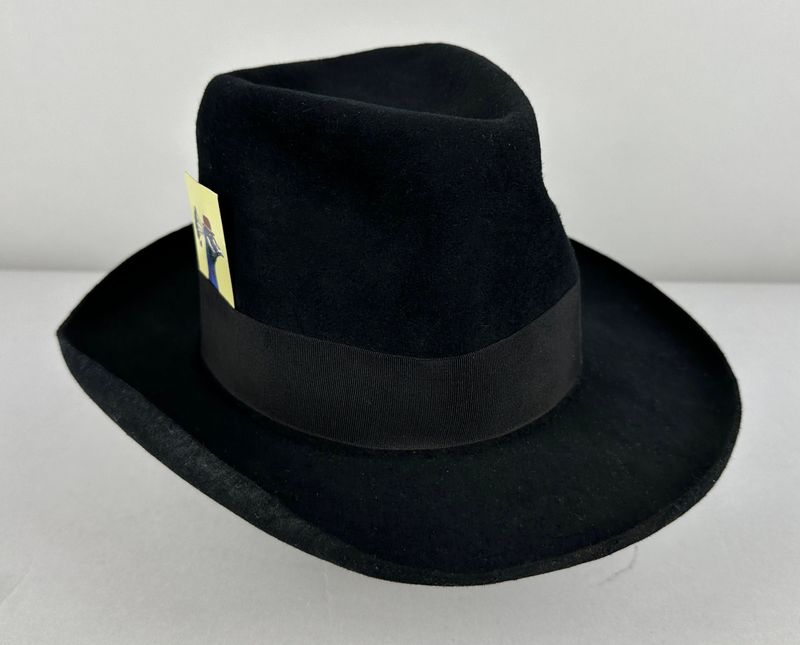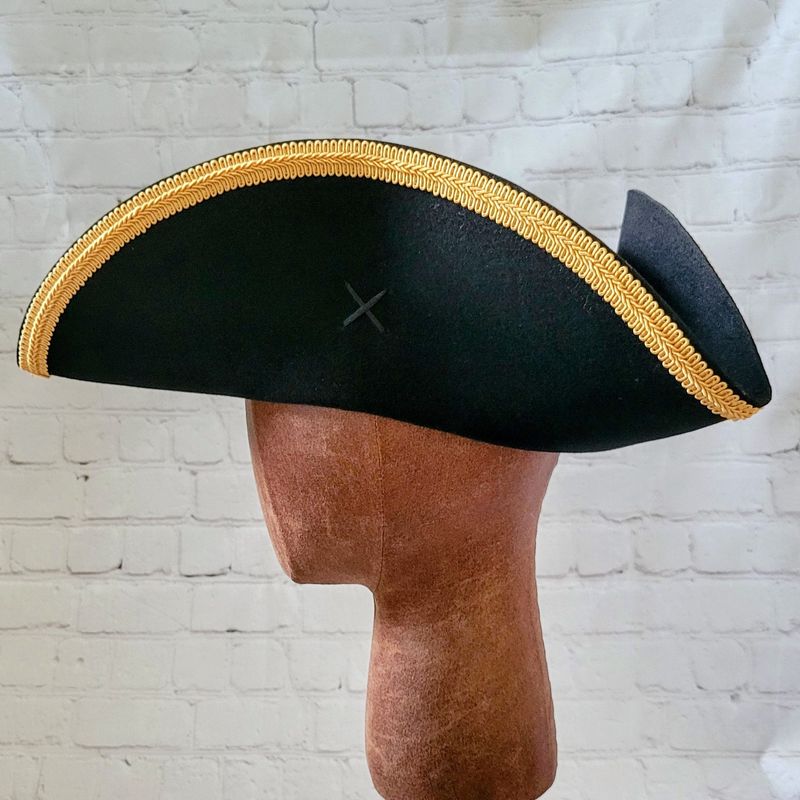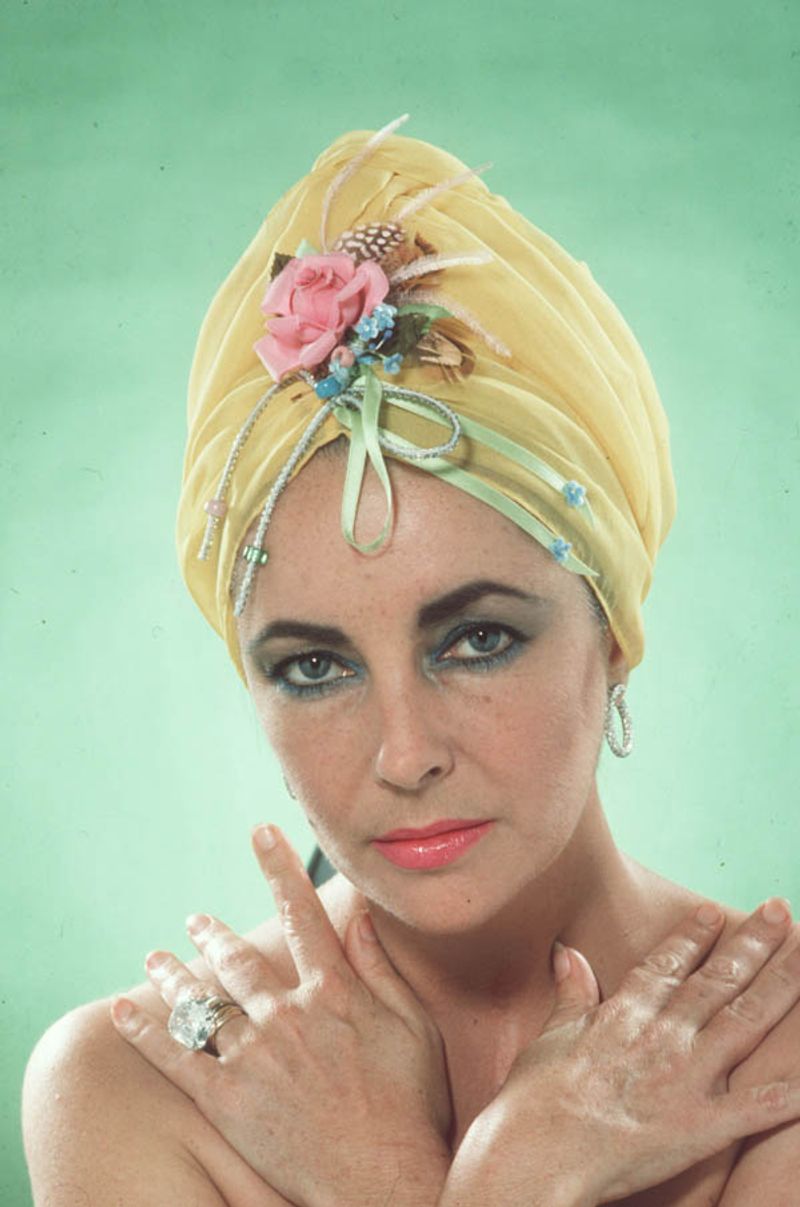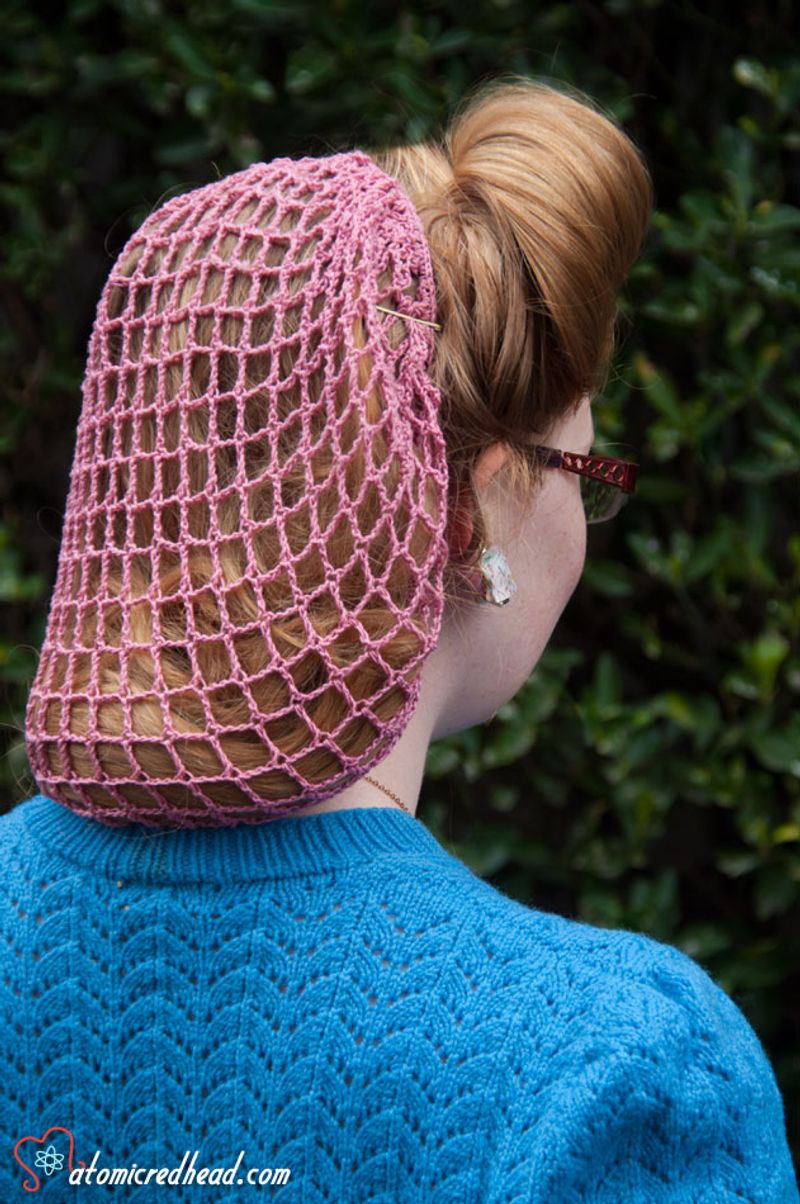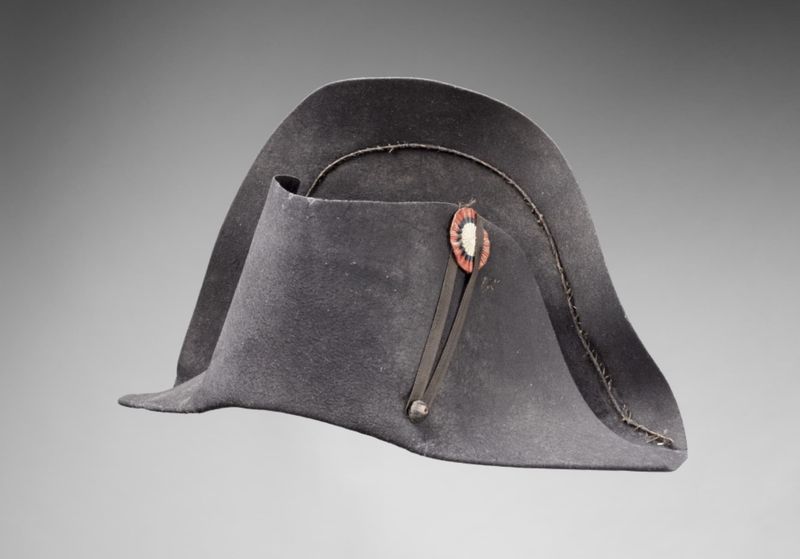Fashion trends come and go, but some historical hats deserve a second chance in the spotlight. These forgotten headpieces once defined entire eras with their distinctive shapes and styles. From practical sun protection to symbols of status and elegance, these twelve historical hats could add flair to modern wardrobes while connecting us to fascinating fashion histories.
1. Edwardian “Picture” Hat 🎀
Towering and theatrical, these magnificent hats transformed everyday women into walking works of art during the early 1900s. Their massive circumference provided the perfect canvas for elaborate decorations that told stories about their wearers’ personalities and social standing.
Milliners would spend days crafting these extravagant pieces, carefully positioning each feather, flower, and ribbon. The weight could be substantial, requiring hat pins nearly a foot long to secure them properly!
Imagine strolling through a modern park wearing this conversation-starting masterpiece – you’d instantly become the most photographed person there, bringing Victorian-era drama to our selfie-obsessed culture.
2. Cloche Hat 👒
Snug as a helmet and sleek as a raindrop, the cloche revolutionized 1920s fashion by perfectly complementing the era’s bobbed hairstyles. These bell-shaped beauties hugged the head and often dipped low over one eye, creating an air of mystery perfect for jazz clubs and speakeasies.
Women would customize their cloches with meaningful pins and brooches that served as silent communication. A certain placement might signal relationship status – engaged, married, or interestingly available!
The cloche required minimal maintenance yet delivered maximum style impact, making it the ideal accessory for today’s busy woman seeking vintage charm without the fuss.
3. Pillbox Hat 🎩
Forever linked to Jackie Kennedy’s impeccable style, these petite architectural wonders sat perched atop the head like delicious little confections. Their clean lines and structural simplicity made them the perfect complement to the tailored suits and shift dresses of the early 1960s.
Despite their diminutive size, pillbox hats commanded attention through rich fabrics and strategic positioning. They required perfect posture and confidence to wear properly – qualities we could all use more of today!
Celebrities occasionally revive this classic for royal weddings and formal events, but imagine the everyday elegance if pillboxes became standard accessories for business meetings or Sunday brunches.
4. Wide-Brim “Gainsborough” Hat 👑
Named after the famous portrait painter who loved depicting aristocratic ladies in their flamboyant headwear, these 18th-century showstoppers demanded attention. The dramatically sweeping brims created frames around ladies’ faces, highlighting their features while providing the perfect excuse for extravagant trimmings.
Society women would spend fortunes on these status symbols, sometimes wearing hats worth more than their servants’ yearly wages! The theatrical silhouette required special doorways and seating arrangements to accommodate their grandeur.
Modern red-carpet events cry out for this level of sartorial courage – imagine a Gainsborough paired with a sleek evening gown, creating an unforgettable contrast between historical opulence and contemporary minimalism.
5. Boater ⛵
Straw discs with personality, boaters evoke lazy river days and barbershop quartets from the turn of the 20th century. Men would select ribbon bands in their school or club colors, creating instant social identification while keeping the sun at bay.
These rigid hats required special storage boxes and careful handling. When the summer season ended on September 15th (regardless of weather!), gentlemen would ceremoniously switch to felt hats – breaking this fashion rule was considered scandalous.
Today’s sustainable fashion movement would embrace the boater’s natural materials and timeless design. Picture modern beach weddings with groomsmen in matching boaters or music festivals where these distinctive toppers help friends spot each other in crowds.
6. Bowler (Derby) Hat 🎩
Round and resolute, the bowler hat transformed ordinary bankers and businessmen into distinguished gentlemen throughout Victorian London. Originally designed as protective headgear for gamekeepers, these sturdy hats soon became urban status symbols across social classes.
Charlie Chaplin’s iconic character made the bowler globally recognizable, but few know these hats were custom-fitted using conformateurs – special devices that mapped the exact shape of a gentleman’s head. A properly fitted bowler should stay put even in strong winds!
Modern menswear desperately needs this dash of formal whimsy. Paired with contemporary streetwear or a tailored suit, a bowler would instantly elevate any man’s style game beyond the ubiquitous baseball cap.
7. Fedora 🕶️
Before becoming associated with internet memes, the fedora reigned as the sophisticated crown of film noir detectives and jazz musicians. The name comes from an 1882 play featuring a princess who dressed as a man and wore this distinctively creased headpiece.
Genuine fedoras feature a strategic pinch at the crown that allows wearers to grab and tip the hat in one smooth motion – a practical design for frequent greeting. The best ones were crafted from beaver or rabbit felt, making them waterproof and incredibly durable.
A fedora revival could rescue this misunderstood classic from its unfortunate associations. When properly sized and styled, these versatile hats flatter almost any face shape while adding instant character to winter outfits.
8. Tricorn Hat ⚔️
Revolutionary in both style and symbolism, the three-cornered tricorn dominated 18th-century fashion before becoming emblematic of American independence. The upturned brims created perfect gutters for channeling rainwater away from the wearer’s face and clothing – practical engineering disguised as fashion.
Colonial gentlemen would signal political affiliations through the positioning of cockades (ribbon rosettes) on their tricorns. The hat’s distinctive silhouette made recognizing important figures possible even from considerable distances.
Reimagined in modern materials and proportions, tricorns could make spectacular accessories for formal events. Their structured geometry would provide a compelling counterpoint to flowing gowns or add dramatic flair to tailored ensembles.
9. Turban 🕌
Hollywood’s golden age starlets transformed the traditional wrapped headdress into the ultimate symbol of exotic glamour. These fabric sculptures required no hair styling underneath – perfect for between-salon-visit days or wartime metal shortages when curlers were unavailable.
Greta Garbo and Gloria Swanson made turbans their signature looks, inspiring millions of women to experiment with this adaptable accessory. Department stores sold pre-wrapped versions for ladies lacking the dexterity to create the complex folds and tucks.
Modern turbans have occasionally appeared on runways, but deserve wider adoption. They’re ideal for travel days, hospital visits, or spiritual gatherings – combining practicality with dramatic presence while celebrating cultural exchange through fashion history.
10. Snood 🧣
Half hat, half hairnet, the snood captured the practical spirit of 1940s wartime fashion. Factory women working with dangerous machinery needed to contain their locks safely, but refused to sacrifice style completely – enter this ingenious crocheted compromise.
Available in various colors and patterns, snoods gathered hair at the nape while allowing volume and decorative elements at the crown. They paired perfectly with victory rolls and pompadours, creating that unmistakable WWII silhouette we associate with “Rosie the Riveter” strength.
Contemporary crafters have kept snood-making skills alive, offering handmade versions on artisan marketplaces. They’d make perfect accessories for vintage-loving brides or practical solutions for healthcare workers seeking personality beyond basic scrub caps.
11. Bicorne 🏴☠️
Commanding and theatrical, the bicorne’s distinctive two-pointed silhouette instantly evokes Napoleon’s imperial presence. Military officers wore these dramatic hats “fore and aft” (points forward and back) or “athwart” (points side to side) depending on their rank and tradition.
Elaborately decorated with gold braid, cockades, and sometimes feathers, bicornes signaled authority at a glance. The hat’s wide points created a frame that emphasized the wearer’s face, making them appear more imposing in battle or diplomatic situations.
Fashion-forward risk-takers could incorporate scaled-down bicornes into avant-garde evening wear. Imagine the impact of this powerful historical silhouette paired with a sleek contemporary gown – revolutionary chic for the red carpet!
12. Floppy Straw Sun Hat 🌞
Free spirits of the 1970s embraced these oversized discs of woven straw as emblems of carefree bohemian summers. Unlike their structured Victorian predecessors, these hats celebrated imperfection – the more weathered and wonky, the more authentic they appeared.
Stevie Nicks and Joni Mitchell made these relaxed toppers part of their iconic looks, often adorning them with flowing ribbons or dried flowers. The wide, undisciplined brims created mysterious shadows across sun-kissed faces while providing genuine protection from harmful rays.
These hats never completely disappeared but deserve elevated status beyond beach accessories. Paired with flowing maxi dresses or even contrasted with tailored city clothes, they add instant vacation vibes to any outfit while honoring sustainable, natural materials.
